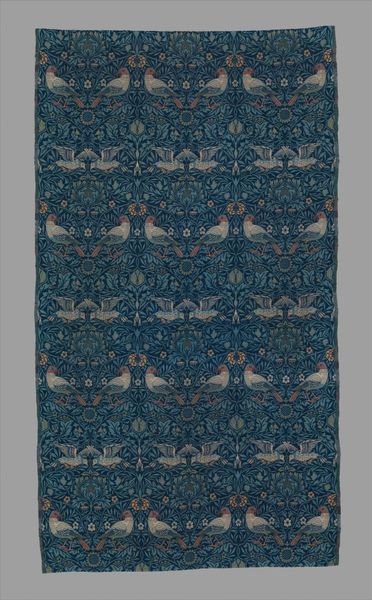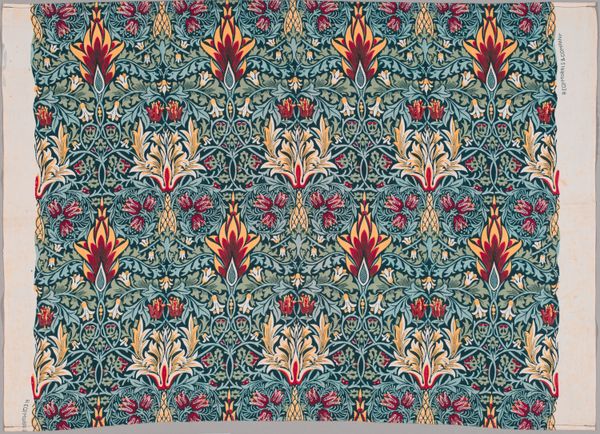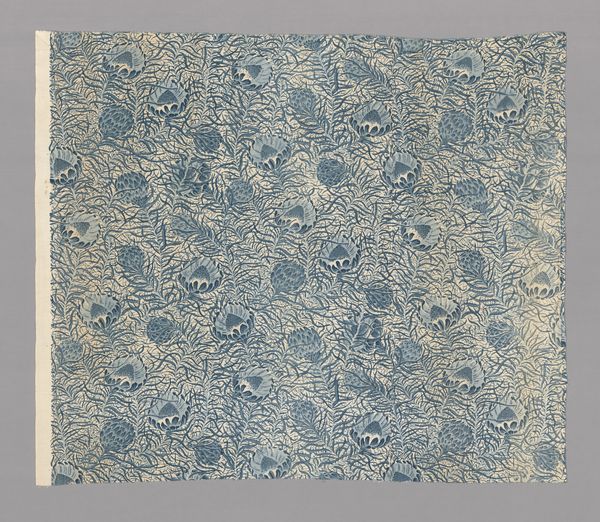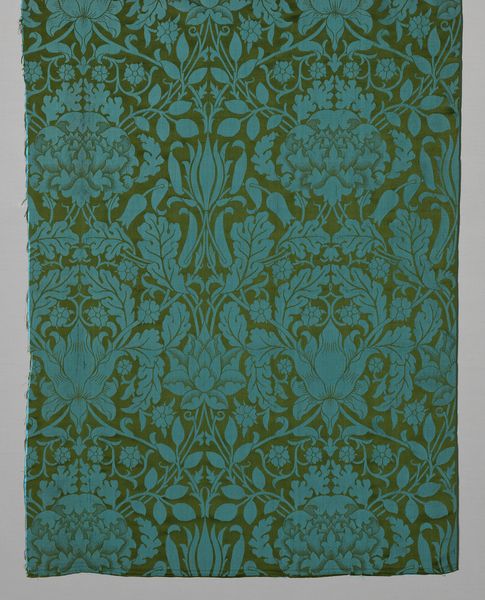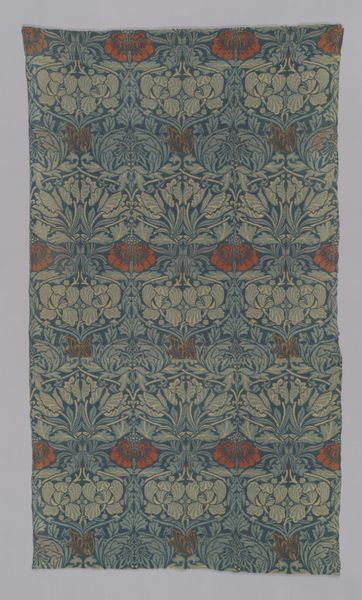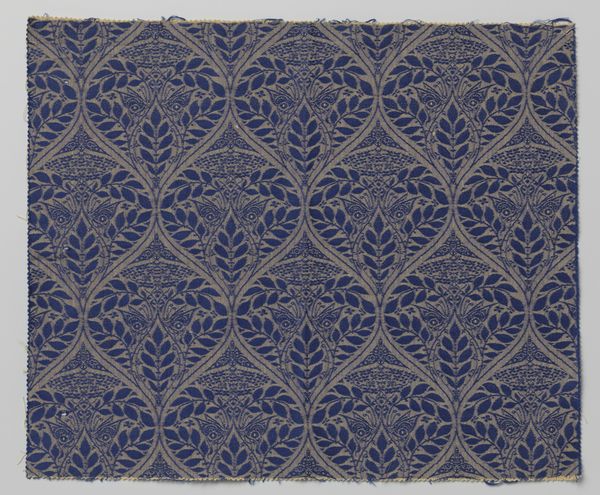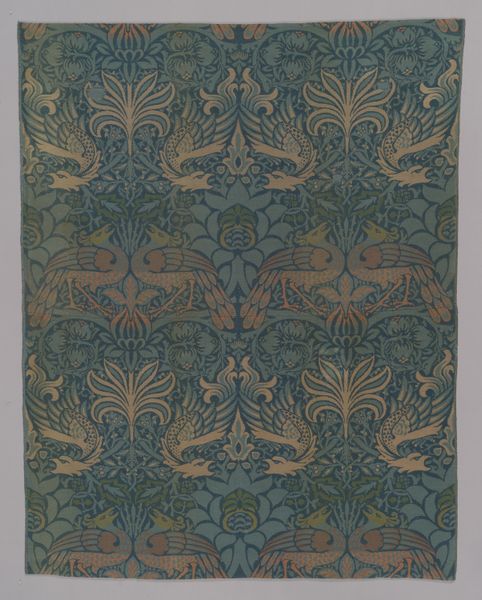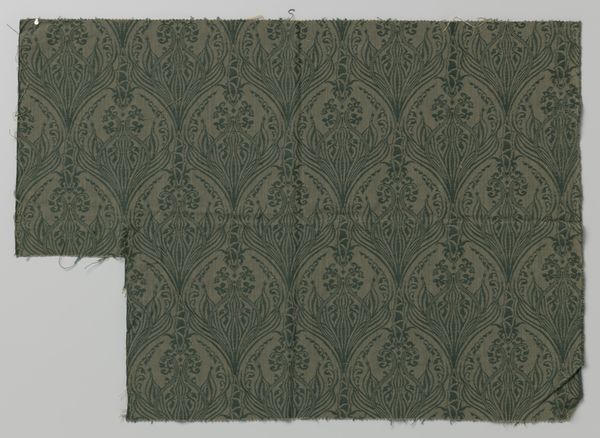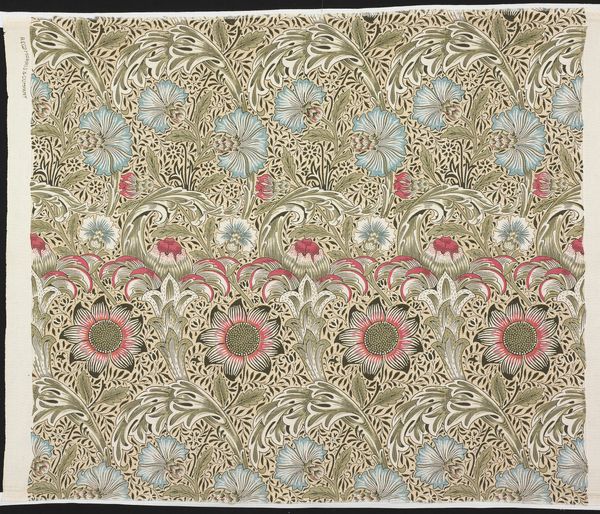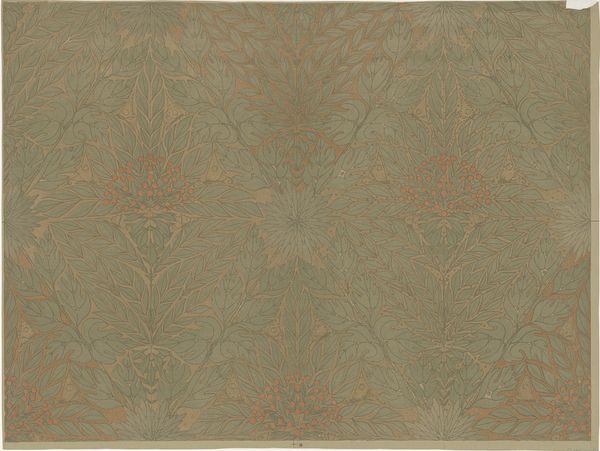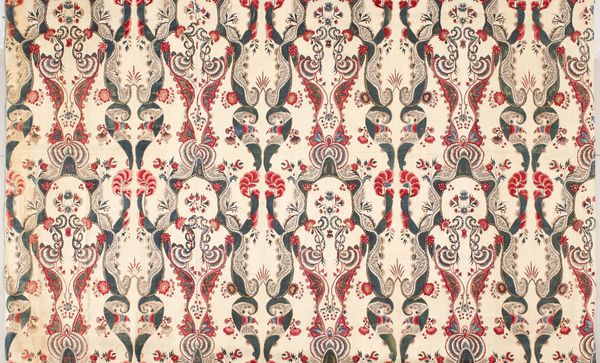
print, textile
#
naturalistic pattern
# print
#
arts-&-crafts-movement
#
textile
#
fashion and textile design
#
pattern design
#
fabric design
#
repetition of pattern
#
regular pattern
#
pattern repetition
#
textile design
#
decorative-art
#
imprinted textile
#
layered pattern
Dimensions: 70.3 × 99.1 cm (27 5/8 × 39 in.) Repeat: 54.1 × 23.5 cm (21 1/4 × 9 1/4 in.)
Copyright: Public Domain
William Morris designed this textile, titled "Tulip", using block printing, a technique where a design is carved into a wooden block, inked, and then stamped onto fabric. Looking closely, you can see how the hand-carved blocks create a slightly irregular, organic feel to the repeating pattern. This contrasts with the increasingly industrialized methods of textile production at the time. Morris was deeply concerned with the social implications of industrialization, particularly the deskilling of labor and the mass production of low-quality goods. His embrace of traditional crafts like block printing was a conscious decision, an attempt to revive a connection between the maker and the made. He aimed to create beautiful, well-crafted objects accessible to all, not just the wealthy. By focusing on materials, making, and its social context, we can better understand this textile beyond its surface appeal, recognizing it as a statement against the alienation of labor in the industrial age.
Comments
No comments
Be the first to comment and join the conversation on the ultimate creative platform.
